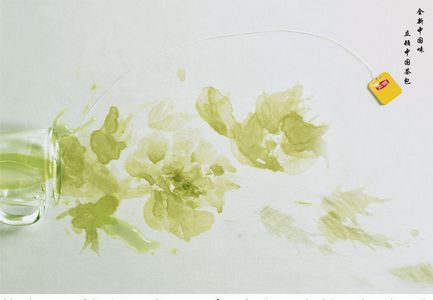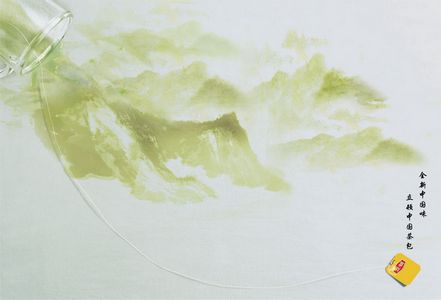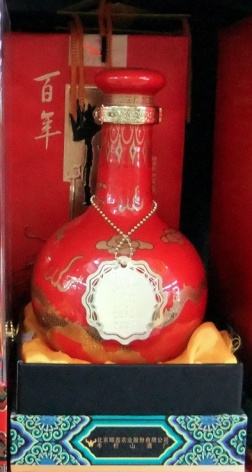 This guest blog post is written by Joe Lurie, Executive Director Emeritus, University of California Berkeley’s International House.
This guest blog post is written by Joe Lurie, Executive Director Emeritus, University of California Berkeley’s International House.
—
Recently, I taught a course attended by Chinese and French students on the intercultural challenges of marketing across cultures. Midway through the course I asked students to select a print, web or YouTube ad describing how the following items reflected cultural preoccupations, values and behaviors in their cultures:
- the product being promoted
- the selection of words in the headers
- the images and colors being used to reinforce the message
After analyzing the ad as a reflection of one’s culture, the student was to ask a fellow classmate from another culture why the ad would or would not work in their culture. In one example, a Chinese student demonstrated how Lipton tea is marketed in China. He noted that no tea bag was explicitly shown, as tea bags do not speak to the traditional way of preparing tea in China, and so not the best way to convince people to drink the Lipton product in China. Rather, the image was of green tea flowing from a cup on its side, producing green images in the style of Chinese paintings of mountains, fish and flowers, each with a particular symbolic value in Chinese culture.  The French student who was interviewed had no exposure to traditional Chinese painting and saw not lovely images, but rather incomprehensible splotches! He added that the ad would not work in France as tea drinkers are generally accustomed to black or brown teas.
The French student who was interviewed had no exposure to traditional Chinese painting and saw not lovely images, but rather incomprehensible splotches! He added that the ad would not work in France as tea drinkers are generally accustomed to black or brown teas.
Color in many other ads revealed the power and status implications of yellow in China, yet something to beware of in France where it often suggests infidelity. Below from a French student are two different ways that Volkswagon is promoted in China and France, reflecting a powerful individualistic/collectivistic contrast, and a terrific way for students to engage in a conversation of cultural discovery: Below you will find an ad for a cleaning sponge selected by a French student, revealing what the student felt is a preoccupation with sex—reflected in explicit and other seductive ways in many other ads for other products in France. Sexual suggestions, so graphically portrayed, would not, according to the Chinese students in my class, be acceptable in Chinese product promotions. And in a French ad for BMW, a man is shown making love to the body of a woman whose face is in fact a BMW!
 A Chinese ad for a very strong 38% alcohol rice beverage portrayed a bottle whose shape was interpreted by the French as a perfume bottle, and so it would not be a convincing way of promoting an alcoholic beverage there.
A Chinese ad for a very strong 38% alcohol rice beverage portrayed a bottle whose shape was interpreted by the French as a perfume bottle, and so it would not be a convincing way of promoting an alcoholic beverage there.
The bold red color signifying affluence and status for the Chinese was seen as over the top by the French students, who noted a preference in the French aesthetic for far more nuanced, muted colors. This prompted a spirited conversation between the Chinese and French in which it was revealed that ads with very high alcoholic content are discouraged or banned in France, but visual ads for condoms were common there, though not generally acceptable in China. That conversation ended with a comparison of toasting custom—the French “drink and sip” vs the Chinese GAMBAY or “bottoms up”—ALL at ONCE!
Should readers of this blog try this approach in their intercultural classes and training sessions, I hope you will consider sharing the fun and insights here….
—Joe Lurie
Executive Director Emeritus at the University of California’s International House, Joe is currently a cross-cultural communications consultant, university instructor and Cultural Detective certified facilitator. Contact Joe via email or LinkedIn.

Brilliant use of everyday artifacts to tease out cultural variations. Love your work, Joe, food idioms and ads. Can’t wait to see what’s next.
LikeLike
Thanks for this, Joe,
Working with intl students is a great opportunity for them and for us. I frequently use ads, images and short videos in my classes here in France as well as in Finland. Though not mentioned here that I can see, we also use the Cultural Detective as a reference for analysis as to how variations on core values are reflected in these artifacts. Let us see more when you can.
Georg
LikeLike
Excellent post! Thank you!
LikeLike
Hi Jo, thanks for these insightful examples illustrating why there is no such thing as a ‘universal marketing message’. One of my favorites is the Puma homage to the UAE on its 40th year anniversary last year. They produced trainers designed in the UAE’s national colors!!! Basically, unwittingly, encouraging people to stamp on their own flag. They were boycotted in the UAE and around the Arab world.
LikeLike
David, do you have a link to share about an article and or photo about this? Many thanks, joe lurie
LikeLike
Thank you Joe, wonderful examples. I will use them with my students!
LikeLike
Thank you. Another great source of ads to be used in intercultural training is that of HSBC (same pictures, different values).
LikeLike
Yes, many of us love HSBC adverts. Shawn, do you have a url that you could share for those you reference?
LikeLike
No, but could set it up!
LikeLike
Thank you Joe for the post and the insights. I wrote a post that shows how HR Jobs Ad in different countries are influenced by their own culture. http://marionintercultural.wordpress.com/2010/03/14/jobhrad/
I know it is in Hebrew but by looking at the ads, one can see the differences too without the explanations or analysis.
LikeLike
Marion, the ads , unfortunately don’t show on the post and I cannot read Hebrew, but hope you might be able to post it in English… with photos.. joe
LikeLike
Joe Hello. Thank you. Following what you wrote, I looked for the ads and put the on my site and also here below. They are recruitment ads for different armies. I hope it helps. Thank you.
1/ USA http://www.youtube.com/watch?v=_h1ozsCPjok
2/ Japan- http://www.youtube.com/watch?v=ZjAXJaFydwM
3/ Russia- http://www.youtube.com/watch?v=tHmiqmfNLhE
4/ Australia- https://www.youtube.com/watch?v=4PzmzJoUm3g
5/ India- http://www.youtube.com/watch?v=ZlnesiouUK4
6/ Lebanon- http://www.youtube.com/watch?v=Bn_lWewAWF8
I hope you can see the cultural differences in these ads. I’ll be happy to hear your comments
LikeLike
Marion, thank you for these! I so look forward to looking through and reviewing them! Most kind of you to share these with us!
LikeLike
Dear Dianne. You are more than welcome. In fact I have to thank Joe Lurie, because thanks to his comment, I understood that the links on my post didn’t work. So thank him first.
LikeLike
Pingback: Intercultural training important to expats’ success | Anne Egros, Intercultural Executive Coach
I have seen a few of the ads on line and in airports. It would be wonderful if they could all be grouped together. I hope you are able to set it up. Joe
LikeLike
Pingback: The Power of French Food Culture…Even for Selling Men’s Underwear! | Cultural Detective Blog
Pingback: Best Wishes for 2014 | Cultural Detective Blog